Magnets in Education
A few of us here at K&J Magnetics recently had the opportunity to present magnetic topics in the classroom. One has a daughter in elementary school working on her first exposure to magnetism and electronic circuits in science class. Another had an invitation from a friend who's a teacher. It was a great time playing show-and-tell with magnets to excited kids!
We've known that magnets are amazing for years. If there's one thing we learned in our recent school visits, it's that magnets in a classroom setting can be seriously engaging. Adding interactive and hands-on stuff to science class really gets students involved and excited.
This article provides a brief description for the many magnetic demonstrations we presented. Regular readers of the K&J blog might recognize a number of demos from earlier articles. We thought listing them all together here might help answer some common questions we receive:
- What kind of science experiments can I do with magnets?
- My kid wants to use magnets in their science fair / project. What should they use?
- What magnets are good for the classroom?
For some of these ideas, we use some fairly powerful magnets for good effect. Please use magnets carefully and responsibly. Some of these experiments are best conducted with adult supervision.
DIY Magnetic Compass: A magnet acts like a compass needle
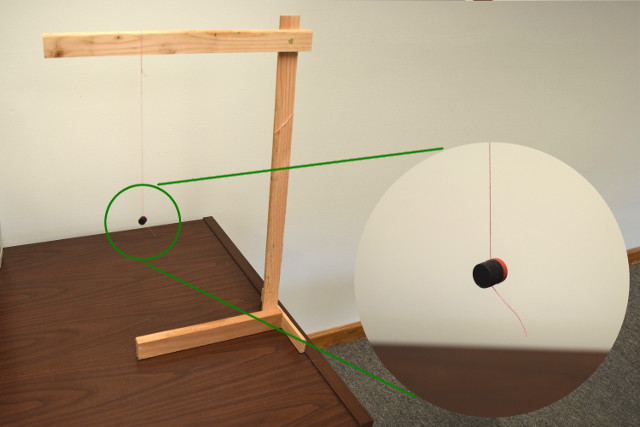
Clamp a pair of magnets on a string, without any steel objects or other magnets nearby. The magnets are free to twist, so they align themselves with the earth's magnetic field; they point along a north-south line. We chose a black D84PC-BLK disc and a black and red D84PC-RB magnet for this, because it's easy to assemble with the red sided north pole.
After you touch the magnet, it might wobble for a while before it settles down to point north. This can take a little patience.
Learn more in our earlier article, Which Pole is North?
Magnetic Forces: Color coded magnets illustrate attraction and repulsion
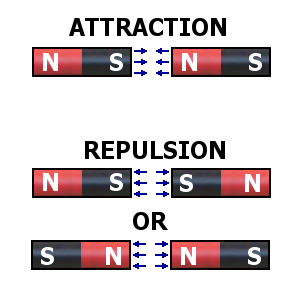
Color coded red-and-black magnets like the D68PC-RB are perfect for demonstrating how magnets can attract or repel, depending on how you face them towards one another. The plastic coating makes them durable, so you don't have to worry about overzealous kids slamming them together and chipping a brittle magnet.
We used these magnets in both our Magnet Basics and Magnetic Forces articles.
Magnetic Forces: Ring magnets on a pencil show stable repulsion

It seems like a great idea to harness the repulsion forces between two magnets to make one magnet float or levitate. Sadly, it's not stable in this configuration. Use a pencil stuck through the holes of repelling ring magnets to hold the floating magnet stable. It's a great hands-on demonstration of how the repelling force increases as you get the magnets closer together.
See more info about levitating magnets in our Magnet Basics article.
Reed Switches: A magnet can activate a switch from a distance
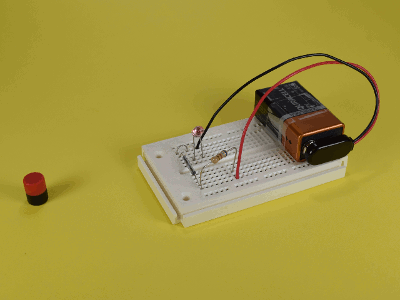
Magnetic sensors like reed switches allow a small magnet to activate a switch. A common real-world example of this happens when closing the lid of a laptop computer. There's typically a small neodymium magnet somewhere in the top. When you close it, a sensor in the base "sees" the magnet and knows to switch the screen off.
This kind of sensor is also used for bicycle speedometers. A sensor on the front fork might sense a magnet that's attached to a spoke on the wheel. By counting how many times the magnet goes by in a period of time, a bicycle computer can calculate your speed (if it knows the circumference of the tire).
The simple demonstration with a reed switch and a few wires always grabs attention. The act of affecting a circuit at a distance seems magic! It's a great demo, easy enough to wrap your mind around (we all know how a switch works), and opens up a lot of possibilities for DIY projects.
Learn more about choosing the right sized magnet for your sensor and desired operating distance in: Reed Switches and Hall Effect Sensors.
Power & Motors 1: Homopolar motors spin wires with a battery and a magnet
The homopolar motor is a very simple demonstration of how you can get something spinning with a battery, some wire and a magnet. It's not strong enough to do much useful work, and really uses up a battery quickly. We love its simplicity and accessibility.
Power & Motors 2: Construct a Shake Flashlight, some assembly required
Construct a flashlight using a strong magnet and a coil of wire, as described in our Shake Flashlight article.
Power & Motors 3: Mendocino Motor, a floating motor powered by light
Build a Mendocino Motor, powered by light!
DIY Audio Speaker: Speakers are made of a magnet and a coil of wire
Audio speakers are made with a magnet and a coil of wire. From the cheapest PC speakers to the nicest headphones, speakers work by the same basic principles shown in this rough prototype. With magnets and some wire, we can turn anything into a speaker! We describe this in our Audio Speakers article.
Levitation 1: Pyrolytic Graphite can float over a bed of magnets
Pyrolytic graphite is a diamagnetic material. What does diamagnetic mean? It's a material that creates a weak magnetic field in opposition to an externally applied magnetic field. This weak opposing field produces a repelling force. Examples include pyrolytic carbon, superconductors and bismuth. Even water is diamagnetic, but only slightly.
The repelling force is tiny, but can show some interesting effects.
Levitation 2: Construct a MagLev Train
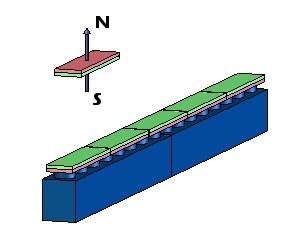
There are a number of ways that MagLev trains can be constructed. For a simple science experiment demonstration, we levitate a magnet over a track of magnets. The construction of the track and train must address the instability of this setup, holding the floating magnet in place. It's not truly frictionless, but the train floats.
Learn more Maglev Trains.
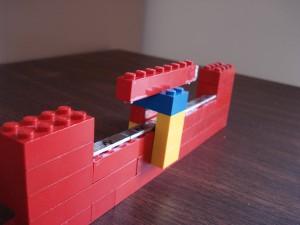
Eddy Currents: Magnets might not stick to aluminum or copper, but...
Eddy current demonstrations always seem to provoke a sense of wonder. The classic demo of dropping a magnet down the inside of a copper tube or pipe is great. You can also slide it along a flat surface.
A swinging pendulum is another great way to show this effect. A magnet on a string that swings close to a sheet of aluminum stops suddenly, for a great effect.
Electromagnets: Making magnets without a magnet
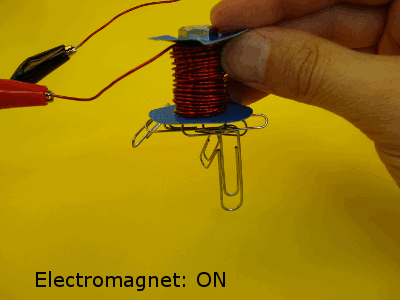
No discussion of magnetism and electricity is complete without talking about how the two can be related, even identical. A current of electricity flowing through a coil of wire, wrapped around an iron core, will act like a magnet. It's a classic demonstration with just a battery and some wire.
See Electromagnet Demonstration.
Meteorites are often magnetic; Identify stuff from space!

Many meteorites are made of an iron nickel mixture. They stick to magnets wonderfully! Magnets are often used by meteorite hunters to both find and help identify meteorites. Learn more in: Magnetic Meteorites.
While the magnetic aspect of a meteorite is pretty straightforward (iron sticks to magnets), it brings a hands-on reality to space objects that otherwise seem so out of reach. Everyone wants to touch it -- it's really from space. Plus, kids can enjoy the old joke: Have a friend gently toss the meteorite against your body. Go home and tell your mom you got hit by a meteorite!
You don't need to find a meteorite yourself. You can find them online! Ours was from the famous Sikhote-Alin meteorite that fell on Russia in 1947.
Good luck with your own science demonstrations with magnets. Let us know if you have any questions, or ideas that we should add here!


